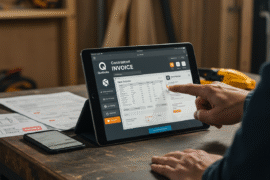This article may contain references to products or services from one or more of our advertisers or partners. We may receive compensation when you click on links to those products or services. Nonetheless, our opinions are our own.
The information presented in this article is accurate to the best of our knowledge at the time of publication. However, information is subject to change, and no guarantees are made about the continued accuracy or completeness of this content after its publication date.
- Key Highlights
- Understanding Your Business Acquisition Needs
- Understanding the Various Kinds of Loans for Purchasing a Business
- Key Factors to Consider When Choosing a Lender
- Tips for Strengthening Your Loan Application
- Maximizing Your Loan for Sustainable Growth
- Navigating the Money Scene After Buying a Business
- Alternative Business Acquisition Financing Options
- Frequently Asked Questions
- Recommended Reads
Key Highlights
- Know what you need financially before selecting a loan
- Explore SBA, traditional bank, seller, online, and private loan options
- Evaluate lenders by interest rates, terms, fees, and reputation
- Prepare a strong loan application with clear financial documentation
- Use loan funds strategically to support long-term business growth
- Monitor finances consistently after the acquisition
Understanding Your Business Acquisition Needs
When considering buying a business, clearly defining your goals is essential. It’s not just about getting money—it’s about finding a loan that fits your business strategy, operating style, and growth plans. Start by identifying which parts of the acquisition matter most to you:
- Financial Stability: Determine how much funding you need to run the business without draining your resources.
- Room for Growth: Assess whether the loan terms will allow for future expansion and align with your long-term plans.
- Credit Score: Understand how your credit history and score affect the types of loans available to you.
Next, review loan options that may suit your situation. Here’s a brief overview:
| Loan Type | Best For |
|---|---|
| SBA 7(a) Loans | Small to medium-sized businesses seeking favorable loan terms |
| Commercial Hard Money Loans | Businesses with strong credit and an established track record |
| Commercial Mortgages | Purchasing real estate as part of the acquisition |
| Mezzanine Financing | Restructuring debt or funding growth initiatives |
Defining your priorities from the start helps you communicate clearly with lenders and increases your confidence.
Understanding the Various Kinds of Loans for Purchasing a Business
Knowing the different types of loans can help you choose the right financing for your business purchase. Each type comes with unique benefits and challenges depending on your circumstances. Here are standard options:
- SBA Loans: Backed by the Small Business Administration, these loans offer low interest rates and extended repayment periods—ideal for many first-time buyers.
- Conventional Bank Loans: These require strong credit and a detailed business plan. If your credit and financials are solid, you may secure better rates.
- Seller Financing: The seller finances part of the purchase, offering more flexible terms and reducing reliance on third-party lenders.
- Private Financing: Involves raising capital from private investors in exchange for equity. Carefully consider how much control you’re willing to give up.
- Online Lenders: These provide fast funding and have fewer requirements, but often charge higher rates and fees.
Use the comparison table below:
| Loan Type | Pros | Cons |
|---|---|---|
| SBA Loans | Low rates, long terms | Lengthy approval process |
| Conventional Bank Loans | Competitive rates | Strict eligibility requirements |
| Seller Financing | Flexible terms | Possibly higher purchase price |
| Private Equity | Access to large funds | Loss of control |
| Online Lenders | Fast access to capital | Higher interest rates |
Key Factors to Consider When Choosing a Lender
Choosing the right lender significantly affects your borrowing experience. Key considerations include:
- Interest Rates: Compare APRs among lenders to find the most cost-effective deal.
- Loan Terms: Ensure repayment schedules align with your cash flow and business cycle.
- Fees and Additional Costs: Be alert to origination fees, closing costs, and prepayment penalties.
- Customer Service: Choose a lender known for responsiveness and clear communication.
- Reputation: Research reviews and ratings through organizations like the BBB to confirm credibility.
| Factor | Considerations |
|---|---|
| Interest Rates | Compare APRs to identify the best value |
| Loan Terms | Evaluate flexibility and repayment length |
| Customer Service | Look for support throughout the process |
By weighing these factors, you’ll be better equipped to choose a lender that supports your long-term goals.
Voted "Best Overall Budgeting App" by Forbes and WSJ
Monarch Money helps you budget, track spending, set goals, and plan your financial future—all in one app.
Get 50% OFF your first year with code MONARCHVIP
Tips for Strengthening Your Loan Application
To increase your chances of approval, show that you’re reliable and organized. Start by gathering the following:
- Tax Returns: Provide the last two to three years of personal and business returns.
- Financial Statements: Include balance sheets and income statements.
- Credit Report: Review and resolve any inaccuracies in your credit history.
Also, focus on how you present your application. A clean, concise submission demonstrates professionalism. Highlight these elements:
- Clear Loan Purpose: Explain how the funding will support the acquisition.
- Solid Business Plan: Outline your strategy, projected revenue, and market research.
- Personal Investment: Mention any capital or assets you contribute to the purchase.
Maximizing Your Loan for Sustainable Growth
Once you receive your loan, use the funds strategically to grow both now and in the future. Focus areas include:
- Equipment Purchases: Invest in machinery that increases efficiency and capacity.
- Marketing Efforts: Boost visibility and reach more customers through digital campaigns.
- Hiring Talent: Onboard skilled employees to strengthen operations.
- Cash Flow Management: Use funds to maintain stability during slow or transitional periods.
Seek lenders who understand your industry and value long-term sustainability. Monitor your progress and adjust strategies as needed. Common loan uses include:
| Loan Purpose | Expected Outcome |
|---|---|
| Equipment Purchase | Increased production capacity |
| Digital Marketing | Higher customer engagement |
| Hiring Specialists | Enhanced service delivery |
| Working Capital | Operational stability |
Using loans thoughtfully strengthens your business today while building a foundation for future growth.
After the acquisition, you’ll face new financial responsibilities. Start by integrating the new business’s finances with your current operations. Review cash flow projections, assess existing debts, and align payment schedules with your budget.
Create a financial plan that addresses your post-acquisition needs:
- Monthly Reviews: Track actual performance against projections.
- Expense Tracking: Use accounting software to stay within budget.
- Emergency Reserves: Set aside funds for unexpected costs or downturns.
A mixed financing strategy can also be helpful. Combining loan types may improve cash flow and reduce risk. Here’s a comparison:
| Loan Type | Interest Rate | Term Length | Pros |
|---|---|---|---|
| Term Loan | 4%–8% | 1–5 years | Predictable payments support expansion |
| SBA Loan | 5%–10% | 10–25 years | Low down payment, government-backed |
| Line of Credit | 6%–15% | Revolving | Flexible access to working capital |
By managing finances wisely after the acquisition, you position your business for long-term success.
Alternative Business Acquisition Financing Options
Beyond standard loans, consider these additional financing methods:
Seller Financing
This option allows the seller to finance part of the purchase, often resulting in more flexible terms and better collaboration. It’s useful when combined with traditional loans to improve cash management and reduce reliance on third parties.
Equipment Financing
Equipment loans let businesses acquire necessary tools without draining capital. This approach improves productivity while preserving working capital. Evaluate what equipment is truly essential before taking on debt.
Franchise Financing
This type of loan supports entry into proven business models. It is designed for buyers of franchise businesses. Funding can come from SBA loans, banks, or specialized lenders that understand the franchise model.
Self-Funding
Self-funding involves using personal savings or assets to finance the acquisition. It offers complete control and avoids interest payments, but it is essential to assess whether your finances can support this option.
Friends and Family Loans
Borrowing from friends or family can offer favorable terms but requires careful documentation. Formal agreements help maintain trust and avoid misunderstandings.
Frequently Asked Questions
What kinds of business loans are available for acquisitions in 2025?
You can choose from SBA loans, traditional bank loans, seller financing, online lenders, and private equity. Each has unique terms and risk levels.
How do SBA loans work for business acquisitions?
SBA loans help buyers cover up to 90% of the purchase cost. The application involves credit checks, financial evaluations, and a strong business plan.
What should I consider when choosing a loan provider?
Focus on interest rates, fees, repayment terms, reputation, and customer support throughout the borrowing process.
Are unique documents required for a loan application?
Yes. Lenders typically require tax returns, financial statements, a business plan, cash flow projections, and information about the business you’re buying.

Reviewed and edited by Albert Fang.
See a typo or want to suggest an edit/revision to the content? Use the contact us form to provide feedback.
At FangWallet, we value editorial integrity and open collaboration in curating quality content for readers to enjoy. Much appreciated for the assist.
Did you like our article and find it insightful? We encourage sharing the article link with family and friends to benefit as well - better yet, sharing on social media. Thank you for the support! 🍉
Article Title: How to Finance a Business Acquisition in 2025—Loan Options, Rates and Strategies
https://fangwallet.com/2025/03/29/finance-a-business-acquisition/The FangWallet Promise
FangWallet is an editorially independent resource - founded on breaking down challenging financial concepts for anyone to understand since 2014. While we adhere to editorial integrity, note that this post may contain references to products from our partners.
The FangWallet promise is always to have your best interest in mind and be transparent and honest about the financial picture.
Become an Insider

Subscribe to get a free daily budget planner printable to help get your money on track!
Make passive money the right way. No spam.
Editorial Disclaimer: The editorial content on this page is not provided by any of the companies mentioned. The opinions expressed here are the author's alone.
The content of this website is for informational purposes only and does not represent investment advice, or an offer or solicitation to buy or sell any security, investment, or product. Investors are encouraged to do their own due diligence, and, if necessary, consult professional advising before making any investment decisions. Investing involves a high degree of risk, and financial losses may occur including the potential loss of principal.
Source Citation References:
+ Inspo
There are no additional citations or references to note for this article at this time.












































